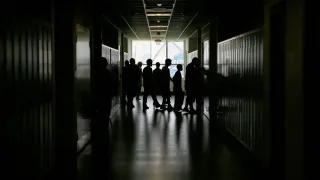January 30, 2021
Let Down Your Hair: New Army Rules for Ponytails, Nail Color
Lolita C. Baldor READ TIME: 3 MIN.
Female soldiers can let their hair down, and flash a little nail color under new rules being approved by the Army. But male soldiers will still have to shave.
Army leaders announced Tuesday that they are loosening restrictions on various grooming and hairstyle rules, as service leaders try to address longstanding complaints, particularly from women. The changes, which also expand allowances for earrings and hair highlights and dyes, are particularly responsive to women of various ethnicities, and will allow greater flexibility for braids, twists, cornrows and other styles more natural for their hair.
The new regulations take effect in late February and come after months of study, in the wake of a directive by former Defense Secretary Mark Esper, who ordered a new review of military hairstyle and grooming policies last July. The review was part of a broader order to expand diversity within the military and reduce prejudice, in the wake of widespread protests about racial inequality last summer.
"These aren't about male and female," said Sgt. Maj. Michael Grinston, the Army's top enlisted leader during a Facebook Live presentation on Tuesday about the latest changes. "This is about an Army standard and how we move forward with the Army, and being a more diverse, inclusive team."
The Army announcement has been long-planned, but it came just days after the Pentagon's first Black defense secretary – Lloyd Austin – took over. Austin has vowed to try to root out racism and extremism in the ranks and foster more inclusion. Esper and many of the service leaders have also been taking steps to make the military more diverse, particularly in the higher ranks.
As an example, Esper last summer ordered that service members' photos no longer be provided to promotion boards. Officials said studies showed that when photos are not included "the outcomes for minorities and women improved."
On Tuesday, Army Sgt. Maj. Brian Sanders told reporters that the panel recommending the new grooming changes considered a variety of factors, including cultural, health and safety issues. He said the tight hair buns previously required by the Army can trigger hair loss and other scalp problems for some women. And larger buns needed to accommodate thick or longer hair, can make a combat helmet fit badly and potentially impair good vision.
At the same time, he said that changes, like allowing women in combat uniforms to wear earrings such as small gold, silver and diamond studs, let them "feel like a woman inside and outside of uniform."
He added, "At the end of the day, our women are mothers, they're spouses, they're sisters, they definitely want to be able to maintain their identity and that's what we want to get after."
In many cases – such as the earrings – the changes simply let female soldiers wear jewelry or hairstyles that are already allowed in more formal, dress uniforms, but were not allowed in their daily combat uniforms.
Army leaders said women will now be able to wear their hair in a long ponytail or braid and tuck it under their shirt. Sanders said that allowing that gives female soldiers, particularly pilots or troops at a firing range, greater ability to turn their head quickly, without the restraints that the buns created.
The new regulations also allow the exact opposite. Female soldiers going through Ranger or special operations training get their heads shaved, like male soldiers do. But when they leave training, their hair is too short, based on the Army's previous minimum length requirements. Now there will be no minimum length rules.
For men, however, the perennial request to allow beards is still a no-go.
Grinston's answer to the question from the online audience was short and direct: "No." He noted that the Army already makes exceptions for medical and religious reasons.
Also, male soldiers still can't wear earrings.
The new lipstick and nail polish rules, however, allow men to wear clear polish, and allow colors for women, but prohibit "extreme" shades, such as purple, blue, black and "fire engine" red. Men will also be able to dye their hair, but the colors for both genders are limited to "natural" shades. Prohibited colors include blue, purple, pink, green, orange or neon.
In another sign of the times, the new rules state that soldiers will now automatically receive black and coyote-colored face masks. They are also permitted to wear camouflage colored masks, but have to buy those themselves.
The Army also is taking steps to change wording in the regulations to remove racist or insensitive descriptions. References to "Fu Manchu" mustache and "Mohawk" hairstyle have been removed, and replaced with more detailed descriptions of the still-banned styles.





